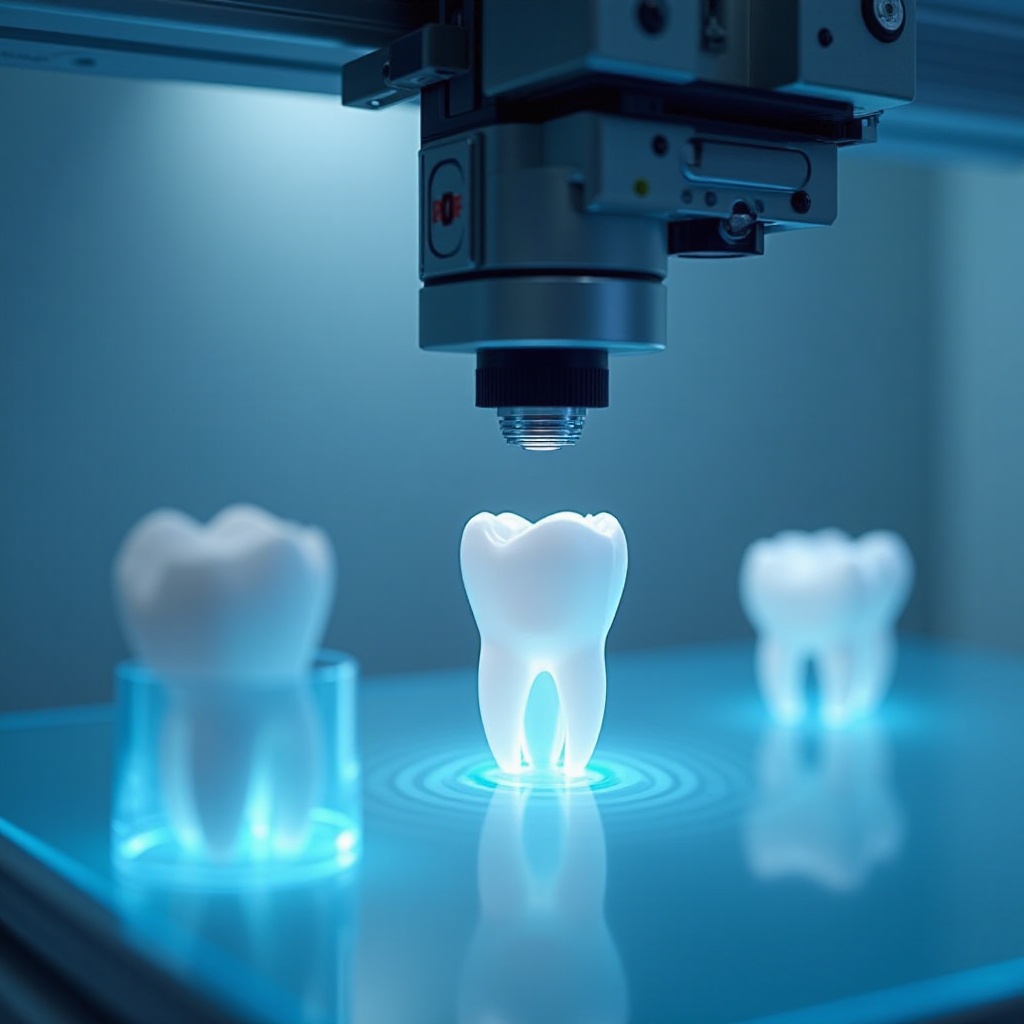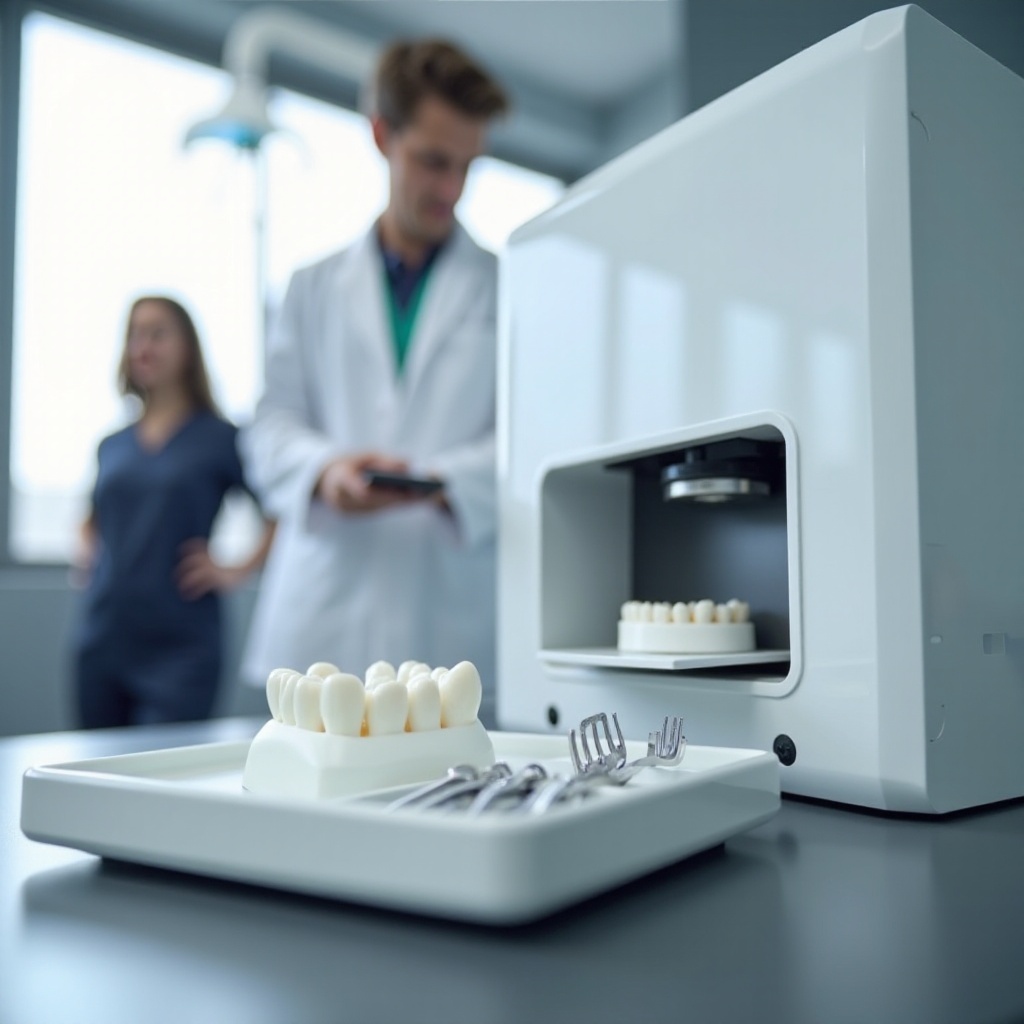Introduction
The integration of 3D printing technology into dentistry signals a new wave of innovation in dental care. Dental professionals can create highly accurate models, appliances, and prosthetics using 3D printers, leading to more efficient and patient-friendly processes. This pivotal change adds a new dimension to dental practices, enhancing customization and precision that traditional methods struggle to offer.

Understanding 3D Printing in Dentistry
3D printing, also known as additive manufacturing, involves creating three-dimensional objects from a digital file. In the context of dentistry, this technology fabricates dental models, prosthetics, surgical guides, and even customized implants. The process starts with a digital scan of the patient’s teeth, which is then used to create a digital model.
After the model is created, it is sent to a 3D printer, which constructs the dental piece layer by layer. Materials like resin, metal, or plastic can be used depending on the type of dental piece being produced. The resulting product is not only cost-effective but also capable of being produced with a high degree of accuracy.

The Benefits of 3D Printers in Dental Practices
Implementing 3D printing technology in dental practices brings a multitude of benefits.
-
Speed and Efficiency: Traditional methods for creating dental prosthetics can take days or even weeks. 3D printing significantly reduces this time, often producing items within hours.
-
Precision and Customization: 3D printers offer unparalleled precision, allowing for the creation of highly customized dental appliances that fit perfectly into a patient’s mouth. This level of accuracy reduces the need for further adjustments and corrections.
-
Cost-effective Production: With 3D printing, dental practices can produce models and prosthetics in-house, reducing reliance on external laboratories. This capability not only saves time but also cuts down on long-term costs.
-
Patient Comfort: The precision and customization afforded by 3D printing mean patients benefit from a better fit and, consequently, greater comfort. Dental appliances made this way are tailored exactly to the patient’s anatomy, which can improve overall treatment satisfaction.

Top 3D Printers for Dentistry in 2024
When it comes to selecting a 3D printer for a dental practice, a few models stand out in 2024:
-
Formlabs Form 3B+: Known for its high-quality prints and user-friendly interface, the Form 3B+ uses Low Force Stereolithography (LFS) to produce dental models with remarkable accuracy. It’s versatile for various dental applications, including models, surgical guides, and prosthetics.
-
Asiga MAX UV: A leader in precision, the Asiga MAX UV has a compact design and a high-resolution print capability, making it ideal for dental laboratories and practices. It is compatible with a wide range of dental materials, ensuring versatility.
-
SprintRay Pro S: Famed for its speed and efficiency, the SprintRay Pro S is designed specifically for dental practices. It provides rapid printing with exceptional detail, perfect for producing prosthetics, orthodontic models, and more.
Real-World Applications and Success Stories
3D printers are regularly making monumental impacts in dental practices:
-
Orthodontics: 3D printing creates accurate dental aligners and retainers in a fraction of the time traditional methods require. Dental practices have reported faster treatment beginnings and greater patient satisfaction.
-
Implants and Surgical Guides: Dental surgeons use 3D-printed guides for precise implant placement. For example, a practice in New York used 3D printing to create patient-specific surgical guides, significantly improving success rates and reducing surgery times.
-
Prosthetics: A dental clinic in California successfully utilized 3D printing to manufacture custom dentures with a superior fit and finish compared to conventional methods. This has dramatically improved patient outcomes and reduced adjustment times.
These real-world examples underline the profound impact 3D printing can have on various dental procedures, granting practitioners enhanced flexibility and efficiency.
How to Choose the Right 3D Printer for Your Practice
Selecting the right 3D printer can be a daunting task with numerous options available. Here are a few key factors to consider:
-
Material Compatibility: Ensure the printer supports the materials you need for your specific applications. Whether it’s resin, plastic, or metal, compatibility with your practice’s materials is crucial.
-
Print Quality and Precision: Evaluate the print resolution and accuracy of the printer. Dental applications require a high level of detail, so precision should be a top priority.
-
Speed: Time is of the essence in dental practices. A faster printer can improve your workflow efficiency, but be cautious not to compromise on quality for speed.
-
Ease of Use: Look for user-friendly models with intuitive software interfaces. This factor helps reduce training time for your staff and simplifies the overall integration into your practice.
-
Cost and ROI: Assess the initial investment against the long-term gains. Consider factors like maintenance, material costs, and the potential to reduce outsourcing expenses.
-
Technical Support and Warranty: Robust technical support and a comprehensive warranty are essential. Reliable customer service can make a significant difference in managing any issues that arise post-purchase.
By carefully considering these factors, dental practitioners can make informed decisions, ensuring they choose a 3D printer that best suits their specific needs and enhances their practice’s efficiency.
Conclusion
The integration of 3D printing technology in dentistry is unmistakably transformative. It enhances the precision, speed, and customization of dental care, benefiting both practitioners and patients. As the technology advances, its applications in dental practices are set to expand even further, making it a vital tool for the industry’s future.
Frequently Asked Questions
What is the average cost of a 3D printer for dentistry?
The cost of a 3D printer for dentistry can vary widely. On average, prices range from $3,000 to $10,000, depending on the printer’s capabilities, print quality, and material compatibility.
How long does it take to print a dental model?
The time required to print a dental model can vary based on the printer and the complexity of the model. Generally, it can take anywhere from 30 minutes to a few hours.
Are 3D printed dental prosthetics as durable as traditional ones?
Yes, 3D printed dental prosthetics can be as durable as those made using traditional methods. Advances in materials and printing technology ensure that 3D printed prosthetics meet the high durability standards required in dental applications.

